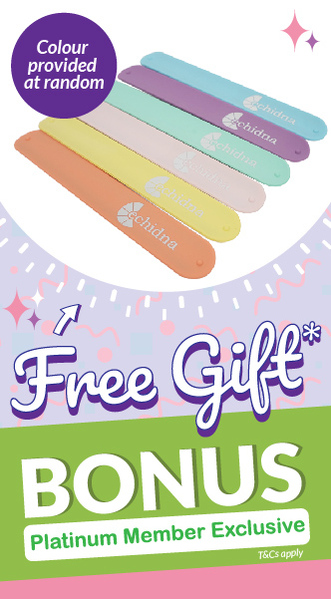Bobbin tension—the mystery unraveled
Aside from hooping the fabric, fiddling with thread tensions, or more to the point, understanding them, seems to be the biggest frustration among home and commercial embroiderers.
Even more specifically, the bobbin tension is the least understood because there is no set “number” or adjustment to work with. It is both a feel and visual adjustment. Sadly, many people are told “Never ever touch your bobbin tension”. This is somewhat crazy because all bobbin cases are adjustable and this is because, believe it or not, they sometimes need to be adjusted.
Have you ever changed brands of bobbin fill only to find that you get the bobbin thread pulling through to the top of the design or by contrast, you may get a much tighter stitch and unwanted puckering? Your first reaction may be to assume that it is bad quality thread and while this can sometimes be true, it is also possible that the new thread is a slightly different weight and will require a small adjustment on the bobbin case tension screw. Here's a thought! Wouldn’t it be good if there was a simple gauge you could use to measure your bobbin tension?
Let’s look at some examples
The illustration below shows both the top and underside of four identical circles, all stitched with different bobbin tension settings. It is a simple circle comprising a fill stitch centre with a 3mm satin stitch border, about the size of a $1 coin. The bobbin tension used for each circle is shown in grams. We have used our Thread Tension Gauge to measure and set the tension.

Bobbin tension
So let’s analyse the results:
Note: These settings are merely guides and will vary by machine and thread brand. Home embroidery machines will typically have tighter (higher) settings than a multi needle machine. I have based these settings on a home style machine. Because of these variables there is NO absolute right setting.
A) 75g
This is quite tight and while it looks not too bad on the top, you will see that there is virtually NO bobbin thread visible on the bottom of the satin stitch. On a large design this would translate into a generally tight looking design and create a great deal of pull, resulting in fabric puckering and design registration or outline errors. Thread breakage is also common place.
B) 50g
This looks much the same as (A) on top but notice the bobbin thread is more visible on the bottom of the satin stitch. On average the amount of bobbin thread visible on the underside of a satin stitch should be between about 30% to 60%. There is NO exact percentage because there are so many variables, you just need be within this range.
Important Note: We are not recommending that you instantly dive in and adjust your bobbin tension if you are getting bad results. Obviously you should first check that you have threaded the machine correctly, that you are using good quality thread (both top and bottom), that you have a good and correct needle type for the job and that your needle tension is set at the default or standard setting. If all this is OK, measure you bobbin tension with a tension gauge and if it is not within the range we suggest, then adjust accordingly. If it is within the range and you still cannot achieve the results you desire, a trip to the technician may be the best remedy.
Two styles of bobbin case
- A drop-in style which accounts for the majority of home embroidery machines and most commonly made of a plastic or synthetic material.
- A push-in style which are used on all multi needle machines and are always made of metal.
Both bobbin cases have the same adjustment characteristics. They both feature a holding screw to hold the tension spring in place and this screw should never be loosened. There is also an adjusting screw which can be turned to adjust the tension.
Drop-in bobbin

Push-in bobbin

Remember
- Turn right to tigthen or increase the tension.
- Turn left to loosen or decrease the tension.
It is common to have thread or lint lodged in between the tension spring assembly on the bobbin case. This foreign matter prevents the spring from closing on the thread, resulting in little or no bobbin thread tension. It is usually very easily fixed by using a fine pin and gently prizing out the unwanted lint or thread.
You can see the thread in this illustration below that sometimes it is not visible until you dislodge it with a pin. Even the smallest amount of lint can upset your machine tension balance.





